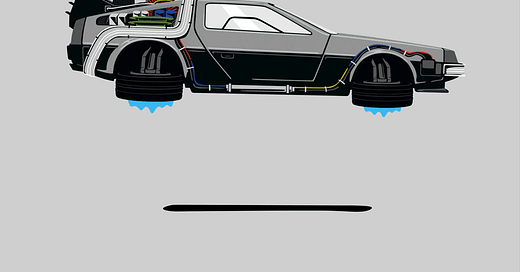A lot of my thinking in recent weeks has been around aerospace and aviation, particularly on the commercial end of that pairing. This is part of our programme called ‘When do we start?’ The programme is aimed at helping our clients dissolve some of the uncertainty about the post-Covid future.
The aerospace and aviation aspect comes because we are doing some work with our good friends at DLA Piper, envisioning post-pandemic aerospace and aviation. In particular we have taken the pre-pandemic idea of airline as an integrated business, and considered how it looks as a disaggregated business.
We don’t do this because we predict that airline businesses are going to disaggregate in the next few years (though some of them might), or that new entrants into commercial aviation are going to enter the sector in very different forms from the ones we are used to (though they might well). It’s not because the rôle of aerospace manufacturers might start to overlap more with the rôle of aviation providers (though they could).
We don’t do this to predict. We do this to understand potential futures, and test our planning and our assumptions against them. This enables us to make strategy that is robust, closer to being future-proof, and less likely to be derailed by strategic shock and discontinuous events.
Which brings us to the flying cars.
Here is one of the big risks in talking about plausible futures: people think you’re wacky. It’s a big downside risk: if people think your scenario work is wacky, then they don’t pay attention to it. It’s a risk that needs to be managed because if your scenario work is sufficiently comfortable, realistic and intuitive — with no risk of being thought wacky — then it’s useless. Nobody needs to think hard about how they’re going to deal with the expected. They’ve already thought about it.
It’s like going to the gym and lifting zero weight. It’s easy, but pointless. It won’t make you sore, but it won’t make you fit.
The flying cars weren’t my idea. There’s a lot of buzz in the aerospace industry about things like urban air lanes for small electrically powered aircraft. Nifty startups (and some big businesses) are looking at building them, building vertiports for them to fly in and out of, and creating automated control systems that will make them a lot safer to get into than cars driven by humans.
When you start to think about what an airline can be, and about energy consumption across entire journeys, and about the best and worst things about air travel, and about the most dangerous parts of a journey on the fringes of a global pandemic, the way you get to the airport is noticeably crap. Before I get into a high-speed-low-drag modern efficient, quiet airliner; I spend an hour lurching in a diesel-powered car. I travel with people who pay more to park their own cars near the terminal than they pay for their tickets. I face the prospect of breathing the terminal building air with people from all around the world, and paying extra to breathe disease-laden air in close quarters in a special lounge where people have breathed on the smoked salmon.
This is where flying cars come in. It’s not that I’m going to own one, or drive one to the airport and pay to park it; that just threatens to turn the sky into more traffic hell.
The e-VTOL aircraft that picks me up from the recreation ground in my village, or from the roof of an office building, is just a component of an integrated journey during which I have a few hours’ remote working. My e-ticket includes getting me and my backpack from my door to my client’s door, with minimal time spent moving from one place to the next.
The airline logo on the flying car that takes me to some regional airport, the livery painted on the aircraft that takes me to some other regional airport, the badge on the cabin crew uniforms: that whole identity frames travel, but doesn’t necessarily represent the businesses who control and maintain the flying cars in their lanes, or who buy the sustainable fuel for the long haul part of the journey.
The disaggregated airline gets flight crew, cabin crew, fully-maintained aircraft and just-in-time parts from an OEM, which might even be the airline of record for regulatory purposes. Their customer-facing front-end is provided by one of the Tech Titans. The flying cars come from another OEM, with their own vertiport and charging station relationships. The whole picture is a bit of a shake-up of what an airline means to the traveller (me), the person who doesn’t want a sky filled with noise (also me), the person who doesn’t want flaming cargo drones crashing in my house (still me), and the person who wants to be able to travel ethically and sustainably (yes, still me).
The way to turn this fiction into strategy input is to analyse the consequences of it for you, for your working environment, your business (your business travel) and your decision-making. When we work in person, we use hexagonal sticky notes. One scenario element (office-to-office air travel), and what it means. It’s not easy: we need to ask the question ‘so what?’ in order to draw out the relevant insights; but when you see the consequences of a scenario, you can’t un-see them.






